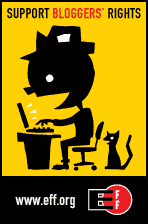AUSTIN, Texas — “Banned, Burned, Seized, and Censored,” an exhibition at the Harry Ransom Center, reveals the rarely seen “machinery” of censorship in the United States between the two world wars.

Graphic identity for Banned, Burned, Seized, and Censored exhibition. Image courtesy of the Harry Ransom Center.
The exhibition runs from Sept. 6 to Jan. 22, 2012, at the Ransom Center, a humanities research library and museum at The University of Texas at Austin.
Featuring more than 200 items drawn primarily from the Ransom Center’s collections, the exhibition explores the question: How did hundreds of thousands of books, pictures, plays and magazines come to be banned, burned, seized and censored in less than 30 years?
“Traditionally, censorship exhibitions start with John Milton’s ‘Areopagitica‘ and then provide a list of banned books,” said Ransom Center Assistant Director and Curator for Academic Programs Danielle Sigler. “This approach gives you perspective on which books have been banned over time, but it doesn’t explain why or how censorship took place. This exhibition focuses on how censorship happens in one country, during a particular era. The New York Society for the Suppression of Vice had a leader who stormed into bookshops, pulled things off the shelves and hauled people to court. The New England Watch and Ward Society in Boston created an informal network of booksellers who quietly removed books from the shelves when they were deemed obscene. At the same time individuals operating as postmasters and customs agents decided for themselves what was obscene.”
See also:





Leave a comment